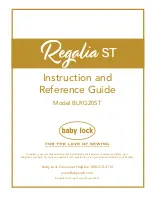
Vacuum interrupter/
operator
Trip-free functionality
Refer to Figure 15: Stored-energy
operating mechanism on page 20, Figure
17: Operating mechanism section diagram
(drawout trip-free linkage shown)
mechanism OPEN, closing spring
DISCHARGED on page 24, Figure 18:
Operating mechanism section diagram
(drawout trip-free linkage shown)
mechanism OPEN, closing spring
DISCHARGED on page 25, Figure 19:
Operating mechanism section diagram
(drawout trip-free linkage shown)
mechanism CLOSED, closing spring
DISCHARGED on page 26 and Figure 20:
Operating mechanism section diagram
(drawout trip-free linkage shown)
mechanism CLOSED, closing spring
CHARGED on page 27.
The trip-free coupling rod (62.8) permits
the immediate de-coupling of the drive
lever (62.6) and the jack shaft (63.0) to
override the closing action by trip
command or by means of the racking
interlocks.
The trip-free coupling rod (62.8) forms a
link between the drive lever (62.6) and the
jack shaft (63.0). The rigidity of this link
depends upon a spring-return latch carried
within the coupling rod.
The latch pivots within the coupling rod
and is normally positioned to maintain the
rigidity of the coupling rod.
Trip-free coupling link (62.8.2) and trip-
free coupling lever (62.8.3) cause the
spring-return latch position to be
dependent upon the normal tripping
components and the racking interlock.
Thus, whenever a trip command is applied
or the circuit breaker is not in the fully
CONNECT or TEST position, the trip-free
coupling rod is no longer rigid, effectively
de-coupling the drive lever and jack shaft.
Under these conditions the vacuum
interrupter contacts cannot be closed.
Opening
If the circuit breaker is to be tripped locally,
the tripping spring (64.0) is released by
pressing the trip button (54.0). In the case
of an electrical command being given, the
shunt-trip coil 52T (54.1) unlatches the
tripping (opening) spring (64.0). The
tripping spring turns the jack shaft (63.0)
via lever (63.5); the sequence being similar
to that for closing.
Rapid auto-reclosing
Since the closing spring is automatically
recharged by the motor-operating
mechanism when the circuit breaker has
closed, the operating mechanism is
capable of an "open-close-open" duty cycle
as required for rapid auto-reclosing.
The circuit breaker is suitable for use in
applications with a rated reclosing-time
interval of 0.3 seconds, per ANSI/IEEE
C37.06-2009.
Manual operation
Electrically-operated vacuum circuit
breakers can be operated manually if the
control supply should fail.
Manually charging the closing spring
Refer to Figure 16: Use of manual-spring
operation crank on page 22. Insert the
hand crank (50.0) in hole (50.1) and turn
it clockwise (about 48 revolutions) until
the indicator (55.0) shows CHARGED. The
hand crank is coupled with the charging
mechanism via an over-running coupling;
thus the operator is not exposed to any risk
should the control supply be restored
during charging.
Manual closing
To close the circuit breaker, press the close
button (53.0). The OPEN/CLOSED indicator
(55.0) will then display CLOSED and the
closing-spring condition indicator (58.0)
will now read DISCHARGED.
Manual opening
The tripping spring is charged during
closing. To open the circuit breaker, press
the trip button (54.0) and OPEN will be
displayed by indicator (55).
23
















































